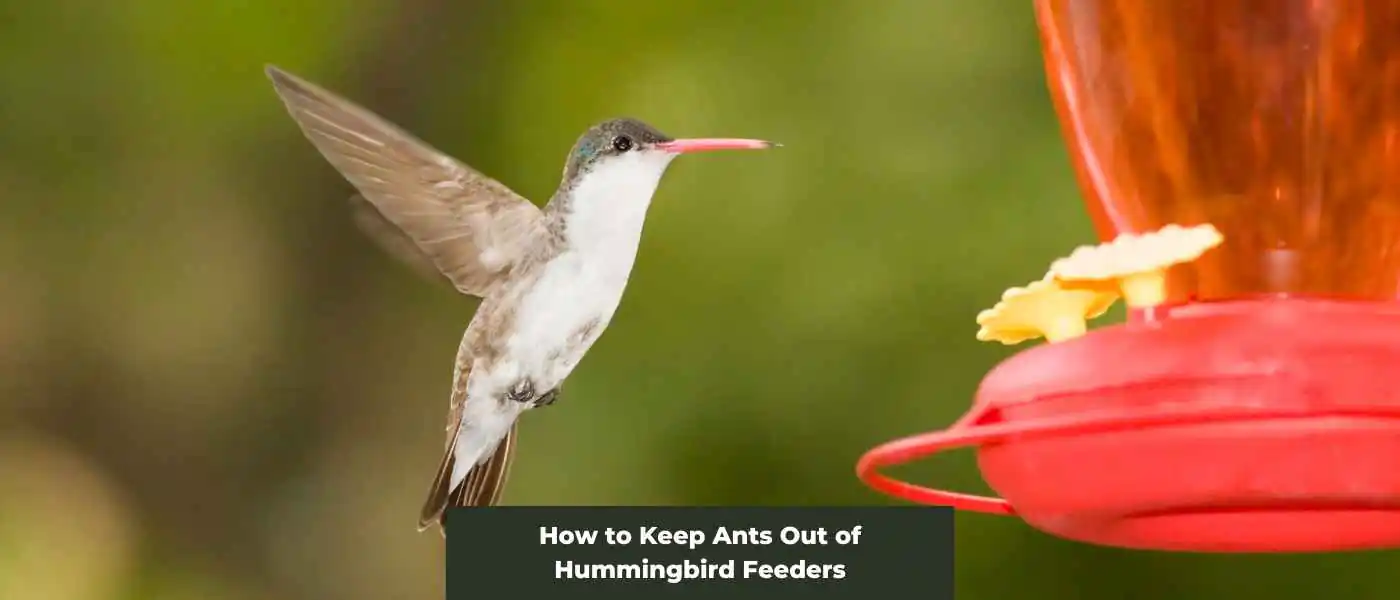Have you ever set up a beautiful hummingbird feeder filled with hummingbird nectar in your yard, only to find it swarming with ants shortly after? Once an ant finds food sources, it leaves a scent trail for the rest of the colony to follow.
To keep ants out of hummingbird feeders, you can use an ant moat, a small device filled with water that is hung above the feeder. Ants can’t cross water, so this effectively deters them. Applying petroleum jelly or an insecticidal product designed for this purpose to the hanger or pole can also prevent ants from reaching the feeder. Regular cleaning of the feeder and its surroundings will help to remove any spilled sugar water that might attract ants.
Key Takeaways on Keeping Ants Away From Hummingbird Feeders
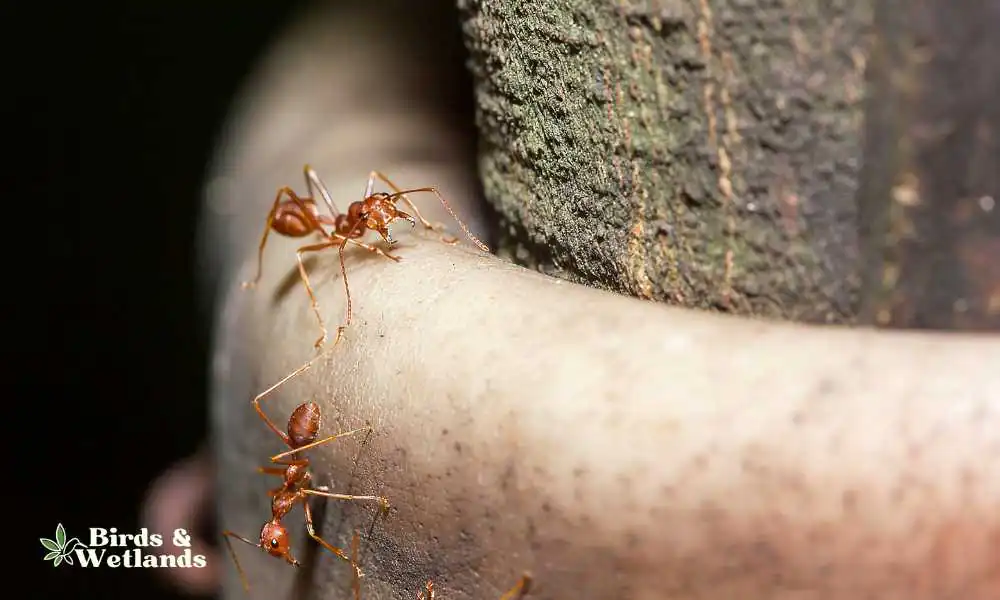
How to stop ants from getting hummingbird food
Hummingbird feeders filled with sweet nectar or sugar water attract hummingbirds. However, they can also attract ants and other pests.
Ants can be a pesky problem when it comes to hummingbird feeders. Not only can they contaminate the nectar, but they can also deter hummingbirds from using the feeder. Fortunately, there are a few easy and effective ways to prevent ants from getting to your hummingbird feeder.
Use an ant moat

Ant moats are small containers that attach to the top of your hummingbird feeder and are filled with water. The water acts as a barrier, preventing ants from reaching the nectar.
To use an ant moat, simply fill it with water and hang it above the feeder. Be sure to keep the water level consistent, as ants may be able to cross over the moat if the water level is too low. Make sure to keep the ant moat filled with water at all times.
If you don’t want to make your own, you can always buy bird feeders with built-in ant moat.
Hummingbird Feeder Ant Guard
Effortless yet effective solution to keep ants away from your hummingbird feeders, ensuring an uninterrupted feeding experience for the birds.
- Instant Protection: Starts working as soon as it is set up, providing immediate relief from ant invasions.
- Easy Setup: Simply fill the moat with water or oil for quick and efficient protection.
- Compatibility: Comes with an S-shaped hook, making it suitable for all types of hummingbird feeders.
Apply a barrier
Several different products are available that create a physical barrier to repel ants from accessing your hummingbird feeder. Some products come in the form of sticky tapes or gels that you can apply to the feeder stand or hanger. Others are in the form of powder or liquid that can be applied to the feeder itself.
Be sure to choose a product that is safe for both hummingbirds and the environment.
Hang the feeder in a shady location
Ants are attracted to sugar, so it’s important to keep your hummingbird feeder out of direct sunlight. The heat from the sun can cause the nectar to spoil more quickly, which in turn can attract ants. Instead, hang your feeder in a shaded area or use a feeder that has a built-in shade.
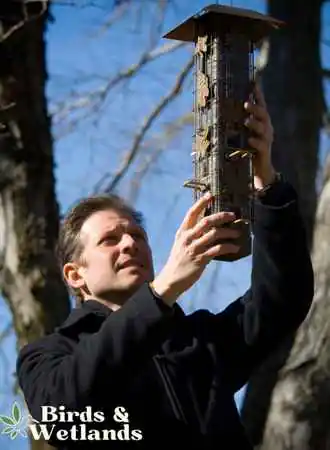
Keep the hummingbird feeder clean
Ants are attracted to dirty, sticky surfaces. To keep ants from being attracted to your feeder, be sure to clean your feeder regularly. Use a mild soap and warm water to clean the feeder, and rinse it thoroughly before refilling it with fresh nectar.
Use a dripless feeder
Dripless hummingbird feeders are designed to prevent nectar from dripping out of the feeder, which can be a major attractant for ants. When the nectar doesn’t drip, ants are less likely to be interested in the feeder. Some dripless feeders have built-in ant moats as well.
Aspects HummZinger HighView Hummingbird Feeder
The Dripless Feeding Solution
- Dripless Design: Avoids any unwanted spillage, ensuring a clean and hassle-free feeding experience.
- Easy Maintenance: The easily removable cover allows for quick and thorough cleaning.
- Comfortable Feeding: HighView perch and four feeding ports invite hummingbirds to rest and feed comfortably.
By taking these simple steps, you can keep ants from ruining your hummingbird feeder and ensure that your backyard is a welcoming oasis for these beautiful birds.
Are ant moats effective for keeping ants out of hummingbird feeders?
Yes, ant moats can be effective for keeping ants out of hummingbird feeders. An ant moat is a small, water-filled device that can be placed above or below a hummingbird feeder to prevent ants from accessing the nectar. In some configurations, it is placed between the feeder and where the feeder hangs.
Ant moats work by creating a barrier that ants can’t cross but don’t prevent hummingbirds. The water in the ant moat creates a moat that the ants have to cross before reaching the feeder. However, ants cannot swim and will drown in the water, preventing them from reaching the feeder.
To use an ant moat, simply fill it with water and hang it above or below the hummingbird feeder. Make sure the moat is filled with enough water to create a barrier that the ants cannot cross.
Keeping the water in the moat clean and free of debris is also important, as dirty water can attract other insects that could potentially harm hummingbirds.
While ant moats can be effective, it’s also important to keep the feeder itself clean and free of spills, which can attract ants. It’s a good idea to clean and refill the feeder regularly, especially during hot weather when nectar can spoil more quickly and attract ants more easily.
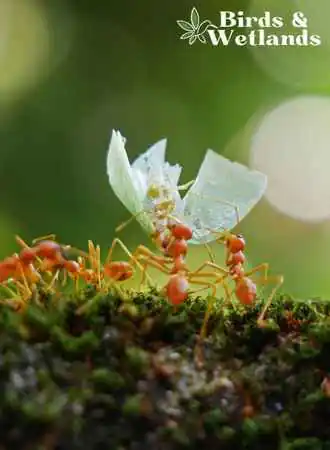
How to create DIY ant moat
Creating an ant moat to keep ants away from hummingbird feeders is a simple process that can be done using a few household items.
To create an ant moat, you will need the following:
- A shallow dish or container (such as a plastic lid, a bottle cap, or a shallow bowl)
- A string or wire for hanging the moat
- Water
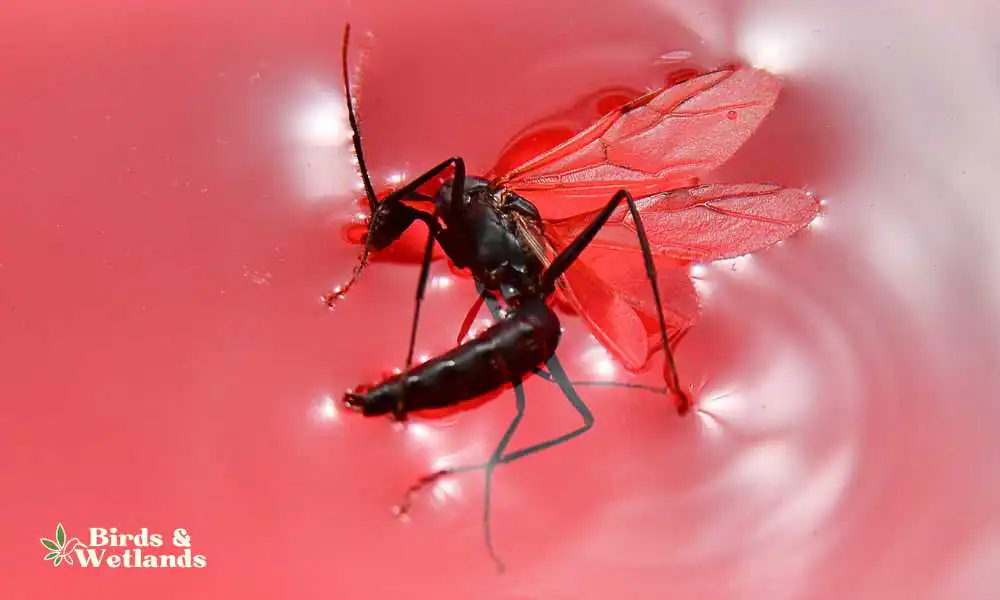
Here are the steps to create an ant moat:
- Choose a shallow dish or container that is wider than the hummingbird feeder opening and will hold enough water to create a barrier for the ants. A plastic lid, bottle cap, or shallow bowl can work well.
- Poke a small hole in the center of the dish or container. This will allow you to thread a string or wire through the hole to hang the moat.
- Thread the string or wire through the hole and tie a knot to secure it in place. The string or wire should be long enough to hang the moat above or below the hummingbird feeder.
- Fill the dish or container with water. The water should be deep enough to create a barrier for the ants but not so deep that it reaches the hummingbird feeder.
- Using the string or wire, hang the moat above or below the hummingbird feeder. Make sure the moat is close enough to the feeder that the ants cannot bypass it.
- Check the moat regularly and refill it with water as needed.
By creating an ant moat and hanging it above or below the hummingbird feeder, you can prevent ants from accessing the nectar and keep your feeder clean and free of unwanted pests.

Additional Tips on Dealing With the Ant Problem of Your Bird Feeders
- Some birders apply vegetable oil or petroleum jelly on the chains, hooks and strings of their hummingbird feeder. However, applying petroleum jelly constantly can be inconvenient.
- You can attach an ant guard with a light insecticide called permethrin, which can kill ants and is also used to treat scabies.
- Hang feeders from a slippery fishing line that’s too slippery for the ants to climb up to a tree branch. This should work especially well if you live in a dry area where an ant moat doesn’t do the trick.
- Use a natural insect repellent, essential oils or sticky substances to the hanger rod which can also repel yellow jackets. You can also hang some bay leaves or mint leaves.
- Hang fake wasp nests around your feeder location.
- Transfer the feeder frequently to different location to throw ants off the trail.
- Use home items such as cayenne pepper, peppermint essential oil, vinegar and lemon juice to coat hanger on feeders.
- Don’t buy feeders with yellow accents because not only do they attract ants, they also attract wasps.
- Hang your feeder above water using a mounting tool such as a clamp pole design.
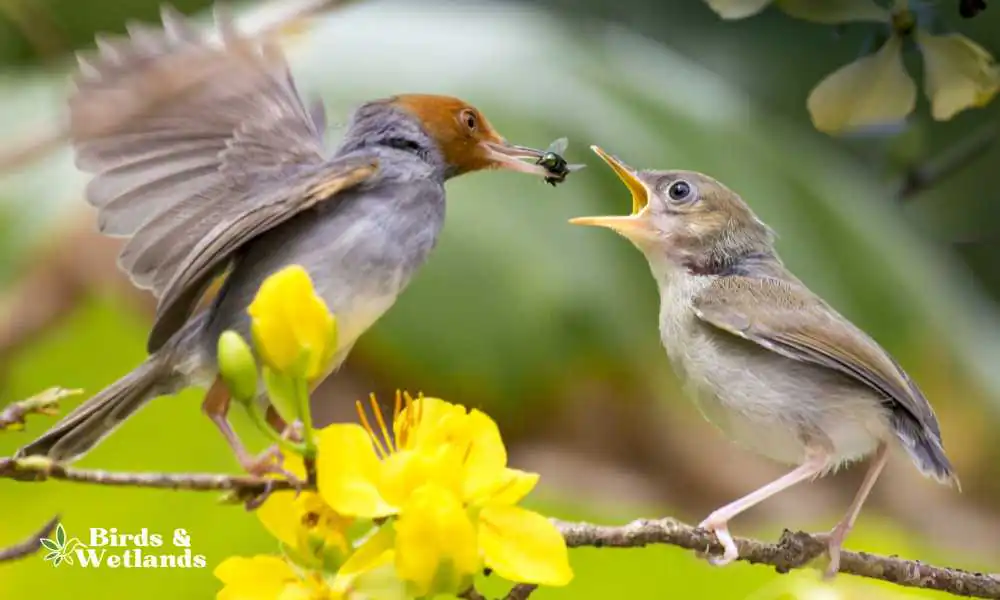
Do hummingbirds eat ants?
Hummingbirds primarily feed on nectar from flowers and other sources of sugar, as well as insects such as mosquitoes, gnats, fruit flies, and small spiders to supplement their diet with protein. While hummingbirds eat insects, they don’t like the taste of ants.
In fact, some species of ants are known to be aggressive and may even attack and harm hummingbirds, so hummingbirds typically avoid them.
However, some species of ants may have a symbiotic relationship with certain plants that hummingbirds visit for nectar, so the presence of ants around a hummingbird feeder or flower may not necessarily deter hummingbirds from feeding.

Will Vaseline keep ants off hummingbird feeder
Yes, applying a small amount of Vaseline or petroleum jelly around the hanging wire or pole of a hummingbird feeder can deter ants. The sticky texture makes it difficult for ants to reach the nectar. However, be aware that in hot weather, Vaseline can melt and become messy. Also, it needs to be reapplied frequently. An ant moat, a small cup filled with water placed above the feeder, can be a more effective and cleaner solution.
Will hummingbirds eat if ants are on feeder?
While hummingbirds will still visit a feeder with ants on it, an excess of ants can deter them or obstruct access to the nectar. Furthermore, ants can contaminate the nectar, which could potentially harm the hummingbirds. Therefore, it’s best to utilise methods to keep ants away from your hummingbird feeders to ensure a safe and pleasant feeding experience for the birds.

